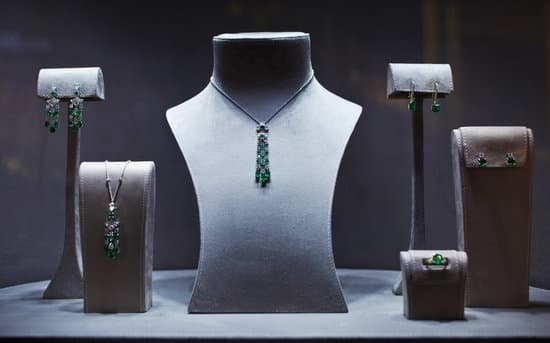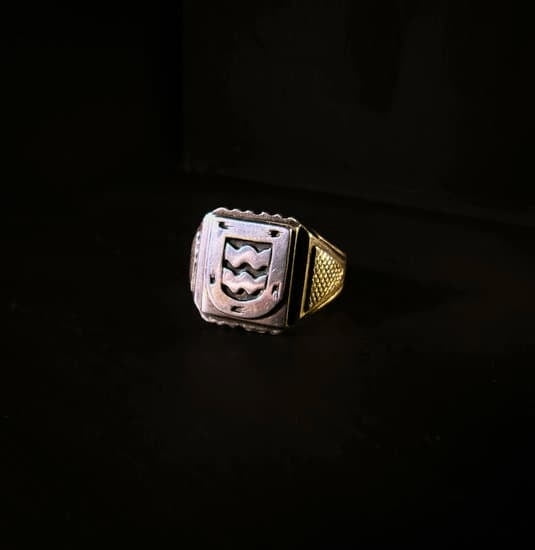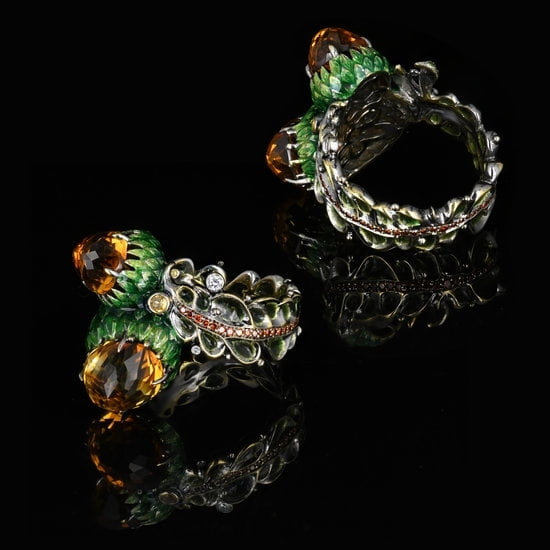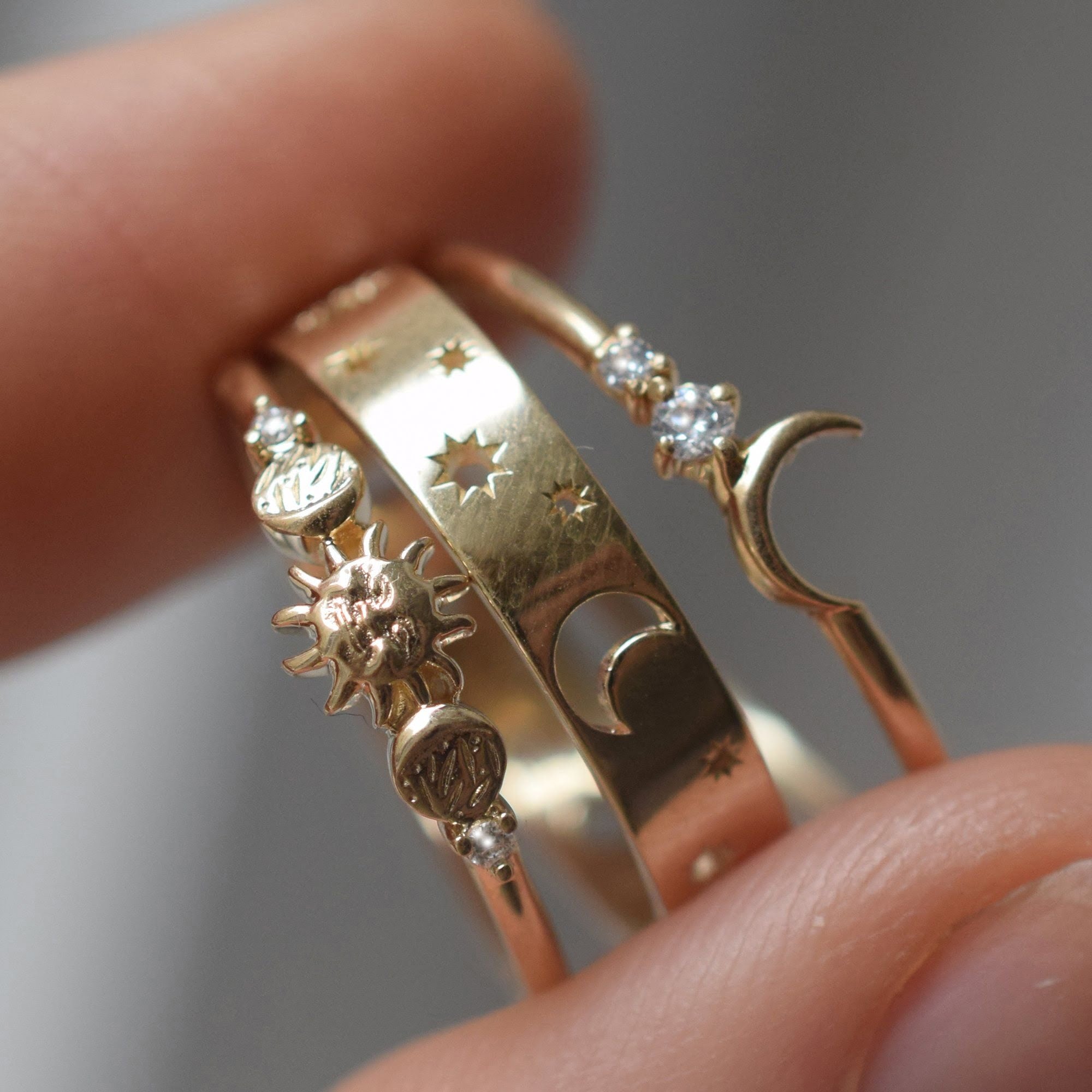Soldering gemstone jewelry is a valuable skill that allows you to create stunning and unique pieces of wearable art. Whether you are a hobbyist, an aspiring jeweler, or simply looking to repair or customize your own jewelry, learning how to solder gemstone jewelry opens up a world of possibilities.
In this article, we will take you through the step-by-step process of soldering gemstone jewelry, from understanding the basics of soldering to selecting the appropriate tools and techniques for different types of gemstones.
Soldering is a technique used to join metal components together using a special type of alloy called solder. When it comes to working with gemstones, soldering becomes more delicate and requires some extra considerations.
Having the ability to solder gemstone jewelry gives you the freedom to repair broken or damaged pieces, create custom designs by combining different metals and stones, and even turn loose gemstones into beautiful wearable art. Moreover, mastering this skill allows you to add value to your jewelry collection by creating unique pieces that reflect your personal style.
In order to successfully solder gemstone jewelry, it is crucial to understand the basics of soldering as well as have proper knowledge about the equipment and materials needed for this process. We will guide you through each stage, starting with preparing your work area by cleaning and setting up your gemstone jewelry properly.
From there, we will help you choose the right soldering method based on the type of gemstone jewelry you are working with. Additionally, we will explain in detail about various torches, flux, solder types and other essential tools required for successful soldering.
Stay tuned for our step-by-step guide on how to safely solder gemstone jewelry while handling precious stones with care. We will provide important safety precautions along with valuable tips for working with different types of gemstones.
Troubleshooting common challenges during the soldering process such as uneven heating or melting gemstones will also be covered. Furthermore, the article will conclude with post-soldering techniques to enhance the appearance and durability of your jewelry, maintenance tips, and an encouragement to start practicing this valuable skill that opens up a world of creativity and self-expression.
Understanding the basics of soldering
Soldering gemstone jewelry requires a basic understanding of the equipment and materials involved in the process. To properly solder gemstone jewelry, you will need the following:
- Soldering Iron or Torch: A soldering iron or torch is used to heat the solder and create a strong bond between the metal components of the jewelry. The type of soldering tool you choose will depend on the size and complexity of your project.
If you are working with smaller, delicate pieces, a small butane torch may be sufficient. For larger or more intricate designs, a jeweler’s torch with multiple tips or a microflame torch may be necessary. - Flux: Flux is a chemical agent that helps clean the surfaces of the metal components to be soldered and promotes the flow of molten solder. It removes any oxidization or dirt that can interfere with the solder’s adhesion. There are different types of flux available, such as paste flux or liquid flux, depending on your personal preference and type of project.
- Solder Wire: Solder wire is the material used to create the actual bond between metal components when heated. There are different types of solder available, such as hard (high melting point) and easy (low melting point) solders, as well as different alloys like silver solder or gold-filled solder. The choice of solder will depend on the metals being joined and their respective melting points.
- Third Hand Tool: A third hand tool is a handy device that holds your jewelry piece in place while you work. It typically consists of two alligator clips attached to flexible arms that can be adjusted to secure your workpiece at desired angles and positions.
- Heat-resistant surface: When working with heat sources like torches or irons, it is important to have a heat-resistant surface to protect your work area from damage. You can use a firebrick or charcoal block specifically designed for this purpose. These materials can tolerate high temperatures and prevent any accidental burns or damage to your work surface.
By understanding the basic equipment and materials needed for soldering gemstone jewelry, you can ensure that you are properly prepared before diving into the soldering process. Gathering all the necessary tools and materials in advance will help streamline your work and make the soldering experience more efficient.
Preparing the gemstone jewelry
Cleaning the Jewelry
Before you start soldering your gemstone jewelry, it is crucial to clean it thoroughly. Any dirt, oils, or residue on the surface can hinder the soldering process and affect the overall quality of your work. Begin by using a soft brush or toothbrush to gently scrub the jewelry with warm soapy water. Make sure to reach all the crevices and remove any debris. Rinse well with clean water and pat dry with a soft cloth.
For gemstones that are more delicate or porous, such as opals or pearls, use a mild jewelry cleaner specifically designed for these stones. Avoid harsh chemicals or ultrasonic cleaners, as they can damage the gemstones. Always refer to the specific cleaning instructions for each type of gemstone and exercise caution while cleaning.
Setting Up Your Work Area
Creating a suitable work area is essential for safe and efficient soldering. Ensure that you have sufficient workspace, good lighting, and proper ventilation. A sturdy workbench or table is ideal for soldering projects. Cover your work surface with a non-flammable material like ceramic or asbestos board to protect it from heat damage.
Arrange all necessary tools and materials within easy reach. This includes your soldering torches, flux, solder strips or wire, tweezers, third hand tool or clamps, pickle pot for cleaning metal after soldering, pickle solution (a mixture of water and pickling compound), copper tongs for handling hot pieces, and a heat-resistant pad to place hot objects on.
Keep a fire extinguisher nearby in case of emergencies and wear appropriate protective gear such as safety goggles and non-synthetic clothing that covers exposed skin. Remember to tie back long hair and remove any loose jewelry that could get caught in equipment or cause accidents during the soldering process.
By properly cleaning your gemstone jewelry before soldering and setting up your work area with the necessary tools and safety precautions, you will be well-prepared to embark on successful soldering projects while ensuring the longevity of your precious gemstone jewelry.
Choosing the right soldering method
Choosing the right soldering method is crucial when working with different types of gemstone jewelry. The method you choose will depend on factors such as the type of gemstone, its heat sensitivity, and the complexity of the design.
One common soldering technique is torch soldering, which involves using a small handheld torch to melt the solder and create a strong bond between the metal components. This method is suitable for most gemstones as long as they can withstand heat. However, it requires careful control of temperature and can be challenging when working with delicate gemstones or complex designs.
Another option is laser soldering, which uses a laser beam to melt the solder without directly applying heat to the gemstone or surrounding metal. Laser soldering is particularly useful for intricate designs that require precise control and minimal risk of damage to sensitive gemstones. However, it requires specialized equipment and may not be readily available to all jewelry makers.
For gemstones that are highly sensitive to heat, such as opals or pearls, cold connections can be used instead of traditional soldering techniques. Cold connections involve joining metal components using techniques like wire wrapping, riveting, or adhesive bonding. These methods allow for secure connections without exposing the gemstones to high temperatures.
When choosing a soldering method, it is important to consider both the technical requirements and your personal comfort level. If you are new to soldering or working with valuable gemstones, it may be best to start with torch soldering on simpler designs before advancing to more complex techniques like laser soldering.
By understanding the various soldering methods available and carefully assessing the needs of each specific project, you can ensure successful results while minimizing the risk of damaging precious gemstones.
Selecting the appropriate soldering tools
When it comes to soldering gemstone jewelry, selecting the appropriate tools is crucial for achieving successful results. Here is an overview of the different types of torches, flux, solder, and other essential tools needed for this process:
- Torch: One of the most important tools in soldering gemstone jewelry is a torch. There are several types to choose from, including butane torches, acetylene torches, and small handheld torches. The type of torch you select will depend on the size and complexity of your projects as well as personal preference. It’s also important to consider safety features such as adjustable flame controls and built-in ignition systems.
- Flux: Flux is a material that helps to clean surfaces and improve the flow of solder. It reduces oxidation during the soldering process and ensures a strong bond between the metal components. There are different types of flux available, such as paste flux or liquid flux. It is important to choose a flux that is compatible with both your metal and gemstones.
- Solder: Solder is the metal alloy used to create bonds between different pieces of metal during soldering. There are various types of solder available, including hard solder, medium solder, and easy or soft solder. The choice of solder depends on the melting points of both the metal components being joined and any gemstones present in the piece.
4. Essential Tools: In addition to a torch, flux, and solder, there are several other essential tools that will make your soldering process easier and more efficient:
- Third hand/holder: A third hand tool or holder helps to secure your jewelry piece in place while you work.
- Pliers: Pliers are essential for holding small components or bending wire during the soldering process.
- Heat-resistant surface: A firebrick or ceramic tile provides a heat-resistant surface where you can safely heat your jewelry without damaging your work area.
- Pickle pot: A pickle pot with a solution of warm water and pickling compound is used to remove oxidation or flux residues from your jewelry after soldering.
By properly selecting the appropriate soldering tools, you can ensure that your gemstone jewelry soldering projects are successful and enjoyable. Always make sure to choose tools that are compatible with your specific project and take safety precautions when working with torches or other high-heat tools. Investing in quality tools will not only enhance your soldering experience but also contribute to the overall quality and craftsmanship of your finished jewelry pieces.
Step-by-step soldering process
Soldering gemstone jewelry can be an intricate process, but with the right guidance and practice, it is a skill that can greatly enhance your jewelry-making abilities. In this section, we will provide a detailed step-by-step guide on how to solder gemstone jewelry, ensuring that you have a safe and successful soldering experience.
Before starting the soldering process, it is crucial to take a few safety precautions. Ensure that your workspace is well-ventilated and free from any flammable materials. Wear protective goggles and gloves to protect yourself from potential harm. Also, be mindful of the type of gemstones you are working with, as some can be sensitive to heat and may crack or discolor if exposed to high temperatures for too long.
Step 1: Prepare your jewelry piece
- Clean the surface of the jewelry piece thoroughly using warm soapy water and a soft brush.
- Rinse well and dry completely before proceeding.
- If needed, use sandpaper or emery cloth to roughen smooth surfaces for better adhesion.
Step 2: Position and secure the gemstone
- Place the gemstone in its desired position on the jewelry piece.
- Use a heat-resistant tweezers or binding wire to secure the gemstone in place.
- Ensure that no part of the gemstone is directly touching where you intend to apply heat.
Step 3: Apply flux
- Apply flux around the area where you want to solder.
- Flux helps prevent oxidation during the soldering process and improves solder flow.
Step 4: Heat application
- Select an appropriate torch based on the size of your jewelry piece and type of metal being soldered (e.g., butane torch for smaller pieces).
- Hold the torch at a comfortable angle and slowly direct the flame towards where you applied flux.
- Heat evenly around the area until it reaches the required temperature for your chosen solder.
Step 5: Soldering
- Carefully add a small amount of solder to the joint, guiding it with a soldering pick or tweezers.
- The solder should melt and flow smoothly into the joint, creating a strong bond.
- Avoid excessive heat, as this can damage both the gemstone and surrounding materials.
Step 6: Cooling and cleaning
- Allow the piece to cool naturally for a few minutes before handling.
- Once cool, dip the jewelry piece in warm water to remove any remaining flux residue.
- Use a soft brush or cloth to clean away any stubborn spots.
By following these step-by-step instructions, you will be able to solder gemstone jewelry with confidence. Remember that practice makes perfect – don’t hesitate to experiment and try different techniques to achieve the desired results. Good luck.
Dealing with common challenges
Uneven Heating
One common challenge that jewelry makers may encounter during the soldering process is uneven heating. This can lead to an incomplete or weak solder joint, which ultimately compromises the overall quality and durability of the piece. To ensure even heating, it is important to use a torch with a fine, focused flame and maintain a consistent distance between the flame and the jewelry.
Moving the torch in circular motions around the area being soldered can also help distribute heat evenly. Additionally, using heat sinks or heat-absorbing materials can help prevent excessive heat from affecting adjacent stones or delicate components.
Melting Gemstones
Another issue that jewelers may face while soldering gemstone jewelry is the risk of melting or damaging the gemstones themselves. Some gemstones are more sensitive to heat than others and require special precautions during soldering.
It is crucial to identify the heat tolerance of each gemstone before attempting any soldering work. For heat-sensitive gems, such as opals or pearls, it may be necessary to remove them from the setting prior to soldering and reattach them afterward using other attachment methods like prongs or adhesive.
Improper Solder Joints
Achieving proper solder joints is essential for creating durable and visually appealing gemstone jewelry. One common pitfall when it comes to solder joints is insufficient or excess solder material. Insufficient solder can result in weak connections that easily break, while excess solder may cause unwanted bumps or lumps on the surface of the jewelry.
To avoid these issues, it is important to carefully control the amount of solder being used by accurately gauging its flow and applying just enough to fill any gaps without overflowing onto other areas. Additionally, ensuring that surfaces are clean and properly fluxed before adding solder will contribute to achieving strong, seamless joints.
By understanding how to troubleshoot these common challenges during the soldering process, jewelers can maintain the quality and integrity of their gemstone jewelry. It is important to practice patience, precision, and attention to detail when soldering gemstone jewelry to achieve successful outcomes. Although the learning curve may be steep initially, with practice and experience, jewelers can overcome these obstacles and create stunning pieces that showcase both their technical skills and artistic vision.
Finishing touches
After completing the soldering process, there are several post-soldering techniques that can further enhance the appearance and durability of gemstone jewelry. These techniques include cleaning, polishing, and adding decorative elements. Taking these additional steps will not only give your jewelry a professional finish but also help protect it from tarnish and wear over time.
Cleaning the soldered gemstone jewelry is an essential step to remove any residue or flux left behind from the soldering process. One common method is to use warm water and mild soap to gently clean the jewelry. Avoid using harsh chemicals or abrasive materials that could damage the gemstones or metal. After washing, carefully dry the jewelry with a soft cloth or allow it to air dry completely before proceeding to the next step.
Once cleaned, polishing can be done to bring out the shine and luster of the gemstones and metal. There are various polishing techniques available depending on the type of gemstone and metal used in your jewelry piece.
For example, a soft cloth or a jeweler’s buffing wheel can be used for polishing gold or silver components, while specific polishing compounds may be required for certain gemstones like diamonds or opals. It is important to research and follow proper polishing techniques according to the specific materials used in your jewelry.
Adding decorative elements such as engravings, textures, or additional gemstones can further enhance the beauty of your soldered jewelry piece. This step allows you to personalize your creation and add unique details that make it stand out. Whether you choose to engrave meaningful symbols, create texture through hammering or wire wrapping techniques, or include additional gemstones for added sparkle, these decorative elements can elevate your design and create a one-of-a-kind piece.
Overall, taking these finishing touches after soldering will not only improve the aesthetic appeal of your gemstone jewelry but also ensure its durability and longevity. By cleaning away any residues left during soldering, polishing to restore its shine, and adding decorative elements to make it unique, you can create a professional-looking piece that will last for years to come.
| Post-Soldering Techniques | Description |
|---|---|
| Cleaning | Remove residue and flux using mild soap and water. Avoid harsh chemicals or abrasive materials. |
| Polishing | Bring out the shine and luster of gemstones and metal. Use appropriate techniques for specific materials. |
| Adding Decorative Elements | Personalize the jewelry by engraving, creating texture, or adding extra gemstones for unique details. |
Caring for soldered gemstone jewelry
Caring for soldered gemstone jewelry is essential to ensure its longevity and keep it looking its best. By following proper maintenance tips and advice, you can preserve the beauty and quality of your soldered gemstone jewelry for years to come.
One important aspect of caring for soldered gemstone jewelry is regular cleaning. Dust, dirt, and oils can accumulate on the surface of your jewelry over time, dulling its sparkle and shine. To clean your soldered gemstone jewelry, use a soft brush or cloth to gently scrub away any debris.
Avoid using harsh chemicals or abrasive cleaners that could damage the gemstones or the solder joints. Instead, opt for mild soapy water or specialized jewelry cleaning solutions that are safe for both the gemstones and the metal.
In addition to regular cleaning, it’s also important to store your soldered gemstone jewelry properly. When not being worn, keep your jewelry in a clean, dry place away from direct sunlight and extreme temperatures. Avoid storing different pieces of jewelry together as they can scratch or tangle each other. Instead, consider using individual pouches, compartments, or small boxes to keep each piece separate and protected.
Another maintenance tip for soldered gemstone jewelry is to take extra precautions when wearing it in certain situations. For example, remove your jewelry before engaging in activities that may expose it to excessive heat, chemicals, or rough impact.
This includes activities such as gardening, working out at the gym, swimming in chlorinated pools, or applying certain skincare products like lotions or perfumes directly onto the areas where your jewelry is worn. These precautions will help avoid any potential damage to both the gemstones and the solder joints.
By following these maintenance tips and advice for caring for your soldered gemstone jewelry, you can ensure that your prized pieces continue to look stunning and remain in excellent condition. With proper care, your soldered gemstone jewelry will be treasured heirlooms that can be passed down for generations to come.
Conclusion
In conclusion, learning how to solder gemstone jewelry is a valuable skill that can open up endless creative possibilities. By mastering the basics of soldering and understanding the different techniques and tools involved, you will be able to create unique and beautiful pieces that showcase your individuality.
Soldering gemstone jewelry allows for greater design flexibility and durability compared to other methods of jewelry making. With the ability to securely join metal components together, you can incorporate gemstones into your designs in ways that highlight their beauty while ensuring their longevity. This skill also enables you to repair or resize existing pieces, giving them new life and saving money on professional repairs.
Not only does learning how to solder gemstone jewelry provide practical benefits, but it also fosters personal growth. The process requires patience, precision, and attention to detail, helping to cultivate a sense of focus and craftsmanship. Additionally, as you experiment with different techniques and materials, you will continuously expand your knowledge and creativity, pushing boundaries and elevating your skills to new levels.
So why wait? Start practicing your soldering skills today and unlock the world of possibilities that come with creating your own stunning gemstone jewelry. Whether it’s for personal satisfaction or launching a career in jewelry design, the benefits of learning how to solder gemstone jewelry are countless. Embrace this valuable skill and watch as your passion for crafting transforms into wearable works of art.
Frequently Asked Questions
Can you solder with a gemstone?
Soldering with a gemstone can be quite challenging, and in most cases, it is not recommended. The high heat involved in traditional soldering techniques can damage or even destroy delicate gemstones. Most gemstones have lower melting points than the metals used for soldering, making them vulnerable to heat damage.
Additionally, some gemstones are prone to cracking when exposed to intense heat. Therefore, it is generally advised to remove any gemstones from jewelry before attempting to solder.
How do you make solder stick to stone?
Making solder stick to stone requires careful preparation and the use of specialized techniques. First and foremost, it is essential to select a suitable solder that is compatible with the stone you are working with. This often means using low-temperature solders that will not harm or discolor the stone.
Before applying the solder, the stone’s surface needs to be properly cleaned and prepared so that it is free from oils, dirt, and any other substances that may prevent proper adherence of the solder. Additionally, jewelers often employ various mechanical methods such as prongs or bezels to help secure the stones in place while soldering.
What kind of solder is used for jewelry?
For jewelry-making purposes, various types of solders can be used depending on the specific requirements of the project. One commonly used type of solder for jewelry is silver solder or sterling silver solder. Since silver has a lower melting point compared to other metals like gold or platinum commonly used in jewelry making, silver solders are often preferred due to their compatibility with different materials and ease of use.
There are also special low-temperature solders available specifically designed for use on delicate or heat-sensitive gemstones, allowing for safe and effective soldering without damaging these precious stones. Ultimately, the choice of solder depends on factors such as metal type and desired durability while considering any potential interactions with gemstones involved in the design process.

Welcome to my jewelry blog! My name is Sarah and I am the owner of this blog.
I love making jewelry and sharing my creations with others.
So whether you’re someone who loves wearing jewelry yourself or simply enjoys learning about it, be sure to check out my blog for insightful posts on everything related to this exciting topic!





